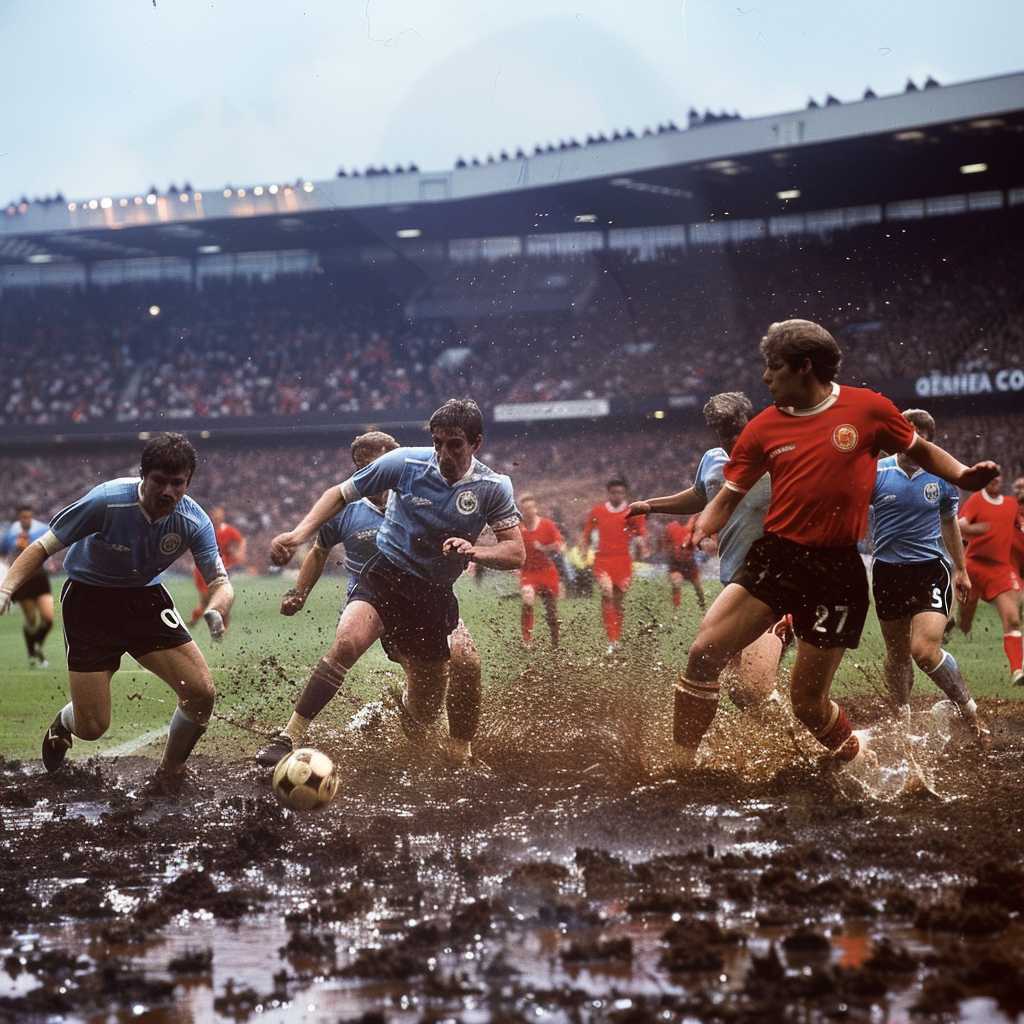# The Historic Rivalry of Manchester: Man City vs Man Utd
Manchester, England houses one of the most intense and historic rivalries in world football. The competition between Manchester City Football Club and Manchester United Football Club, separated by just a few miles, transcends the sport, embedding itself into the culture and identity of the city. This is more than a game; it’s a battle for pride, supremacy, and bragging rights in Manchester.
The Origins of the Rivalry
The roots of the Manchester rivalry date back to the late 19th century. Both clubs have origins tied directly to the working-class communities of Manchester. Originally founded as St. Mark’s (West Gorton) in 1880, Manchester City has long-established roots within the local community. Eclipsed for much of their history by their more successful neighbors, it wasn’t until the turn of the 21st century that City emerged as a football superpower.
Similarly, Manchester United, founded in 1878 initially as Newton Heath LYR Football Club, was a product of the local railway workers at the Lancashire and Yorkshire Railway (LYR). Renamed as Manchester United in 1902, the club has since blossomed into one of football’s most decorated and globally renowned entities.
The Derby Impact on English Football
The contention between United and City is epitomized each season when the teams face off in the Manchester derby. With both sides aiming to dominate English Football, their skirmishes are not just regional contests but define who ascends to lead in the national and European theater.
United’s dominance under Sir Alex Ferguson throughout the late 20th and early 21st centuries kept City in their shadow for many years. However, since City’s acquisition by Abu Dhabi United Group for Development and Investment in 2008, there has been a paradigm shift in power, with City becoming an ascending force both domestically and internationally.
Key Matches and Moments
Each derby comes with its own set of highlight-worthy moments. From Wayne Rooney’s iconic overhead kick in 2011 to the dramatic 6-1 thrashing by Manchester City at Old Trafford during that same year, these events have left an indelible mark on fans’ memories.
One cannot forget Sergio Aguero’s last-gasp goal against QPR on the final day of the 2011-12 Premier League season, which delivered City their first league title in 44 years—a significant moment in shifting the epicenter of Manchester football toward the sky blue portion of town.
Discussing Tactics and Play Styles
Over time, both clubs have exhibited various tactics and play styles reflective of their management and player abilities.
Traditionally known for their attack-minded approach, Manchester United’s “wing-play” philosophy has seen adaptations but nonetheless remains steeped in their DNA. Through the era of Sir Matt Busby into Sir Alex Ferguson’s tenure, pace and power down the flanks were central to United’s success.
Manchester City’s style evolved significantly with managerial changes. The appointments of managers like Roberto Mancini, Manuel Pellegrini, and particularly Pep Guardiola have curated a style focused on ball possession, high pressure, and intricate passing – redefining how modern football is played.
The Role of Supporters
The passion that emanates from Manchester on derby day is borne largely from its loyal supporters. The cultural identity associated with supporting either team runs deep within familial lines—being a ‘Blue’ or a ‘Red’ is more than preference; it showcases an allegiance that spans generations.
The Growth Beyond Football: Economic and Global Impact
The business component of this rivalry cannot be understated. Both clubs are not just sports teams but global brands that operate within a billion-dollar industry.
Manchester United helped set this template with their prolific marketing reach across continents, turning football fandom into a commercial phenomenon. Conversely, since City’s acquisition by their wealthy owners, they’ve ascended quickly as global players through aggressive investment and smart off-field enterprises.
Notes
[Image Description: A dynamic photograph capturing a high-tension moment during a Manchester derby match, with players from both teams fiercely contesting for control over a plainly visible ball on the lush green pitch.]
